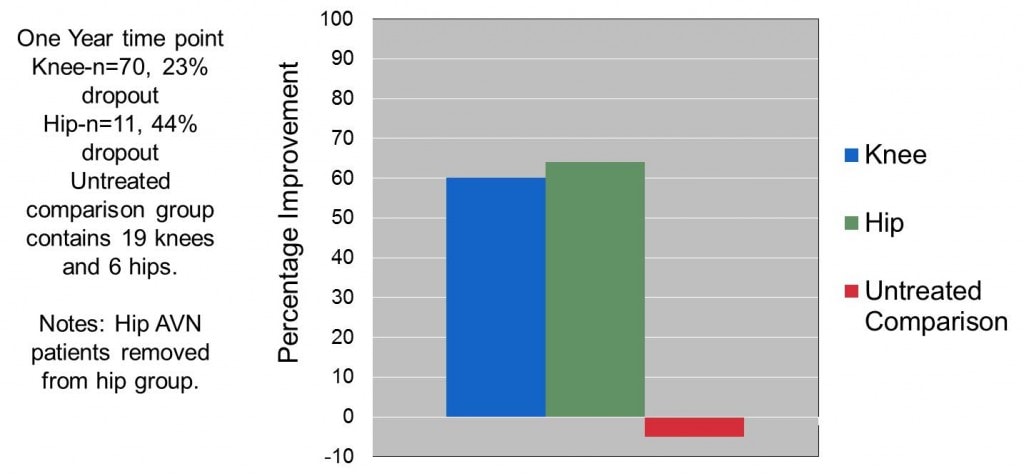Further Analysis of Regenexx-C Data
We’ve been re-analyzing Regenexx-C data for a scientific publication and came across some interesting observations. We’ve traditionally reported that hip arthritis patients tended to respond less often than knee arthritis patients to our cultured stem cell injections. However, when we take out patients with the bone disease avascular necrosis (AVN, also called osteonecrosis), a different picture emerges. AVN is a disease where the bone in the ball of the hip joint is dying off and the arthritis is not caused by usual wear and tear forces, but usually by this bone death. While we’ve had great success in treating ARCO grade 1 and 2 AVN patients, we usually get grade 3’s and 4’s who want to try the procedure, as those patients are usually facing a hip replacement with many more possible complications than the average patient with hip arthritis. These later stage AVN patients were in our initial hip arthritis data we reported because they also have arthritis. When we remove them from that hip data at the one year mark, we see what we have above (see graph). Initially it looks like the hip arthritis patients are reporting a slightly greater amount of relief than the knee arthritis patients. However, the drop-out rate (the number of patients we couldn’t contact to obtain outcome information) is higher in the hip group than the knee group. To us, this likely still means that the patient’s with hip arthritis are not doing as well as the knee group. This is because more seem to have moved onto other treatments and as a result, are no longer answering outcome questionnaire requests. However, this data also shows that hip patients without AVN tend to do better with stem cell injections than those with AVN. We’ve been working on improvements in the procedures used to accurately place stem cells into the hip to provide maximum benefit, so hopefully the next time we look at this data the hips will be doing as well as the knees. The upshot? We spend many hours pouring through our standardized outcome questionnaires making sure what we do is helping patients and making sure that we can reasonably set expectations for any stem cell based procedure.

NOTE: This blog post provides general information to help the reader better understand regenerative medicine, musculoskeletal health, and related subjects. All content provided in this blog, website, or any linked materials, including text, graphics, images, patient profiles, outcomes, and information, are not intended and should not be considered or used as a substitute for medical advice, diagnosis, or treatment. Please always consult with a professional and certified healthcare provider to discuss if a treatment is right for you.

